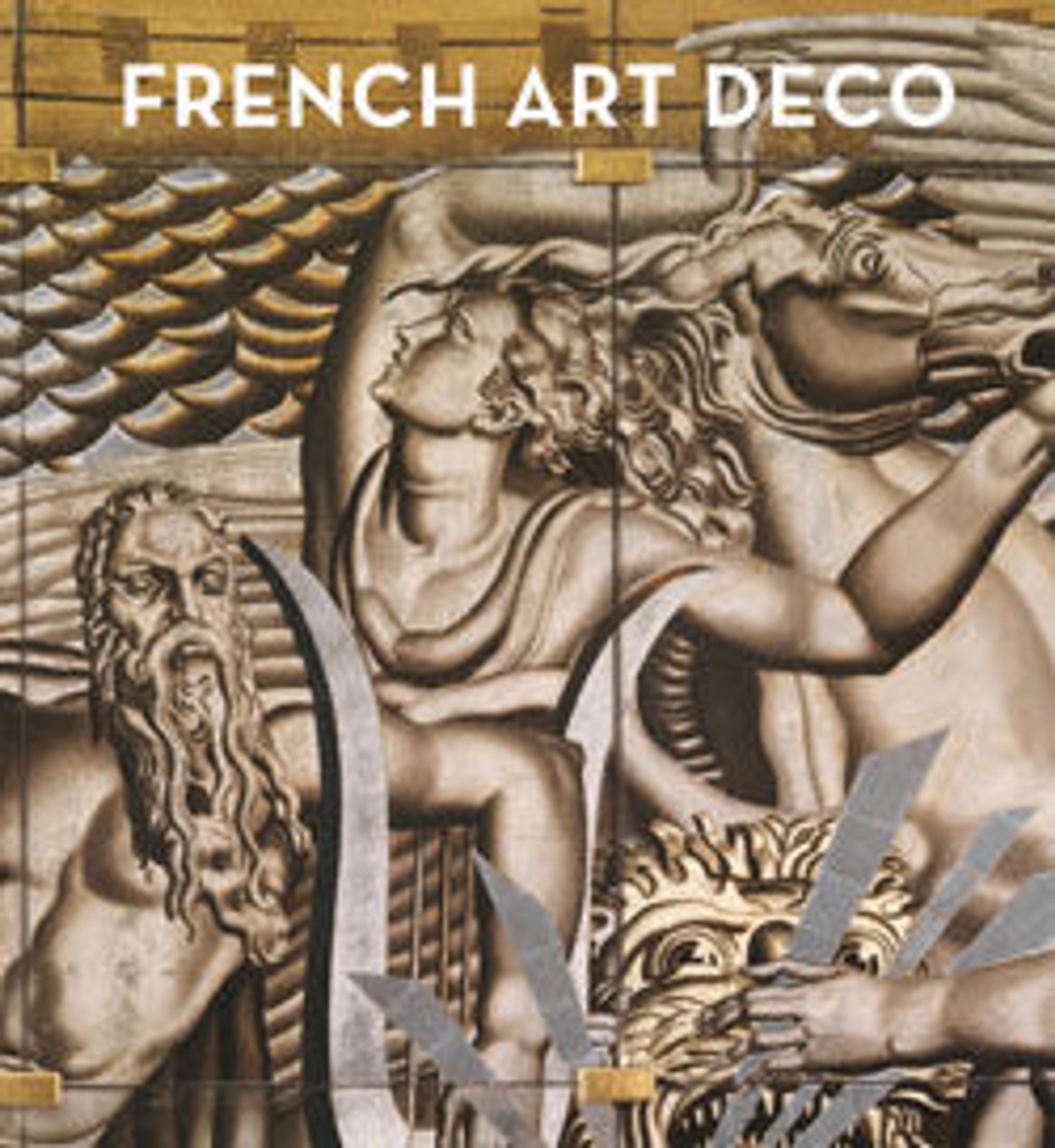Polar Bear
Classically trained at the École des beaux-arts and the École nationale des arts décoratifs in Paris, the sculptor Pompon was a frequent exhibitor at official French salons, and a studio assistant to Auguste Rodin from 1890 to 1897. At the age of 67, he first showed a life-sized plaster sculpture of a striding polar bear at the 1922 Salon d’automne, the popularity of which led him to produce related models in a variety of sizes, from table-top to full-scale, and in a range of media including plaster, porcelain, marble, and bronze.
As a genre, animalier sculpture—depictions of animals—reached its height in mid-nineteenth century France. The public taste for it, however, lasted well into the twentieth, even if principally as a form of decoration. Indeed, Polar Bear was a favorite model of Pompon’s friend, the renowned decorator Émile-Jacques Ruhlmann, who featured it prominently in many of his interiors—most notably his widely-visited room settings at the 1925 Exposition internationale des arts décoratifs et industriels modernes, the vast and influential state-sponsored design fair in Paris that today lends its name to the Art Deco style.
The Met purchased this sculpture in 1930 from the Galerie Edgar Brandt, the eponymous Paris showroom of the well-known metalworker. In addition to displaying his own works, Brandt exhibited sculpture, paintings, furniture, glassware, ceramics, and other decorative arts by his friends, underscoring the close relationship between fine and decorative arts in French Art Deco.
As a genre, animalier sculpture—depictions of animals—reached its height in mid-nineteenth century France. The public taste for it, however, lasted well into the twentieth, even if principally as a form of decoration. Indeed, Polar Bear was a favorite model of Pompon’s friend, the renowned decorator Émile-Jacques Ruhlmann, who featured it prominently in many of his interiors—most notably his widely-visited room settings at the 1925 Exposition internationale des arts décoratifs et industriels modernes, the vast and influential state-sponsored design fair in Paris that today lends its name to the Art Deco style.
The Met purchased this sculpture in 1930 from the Galerie Edgar Brandt, the eponymous Paris showroom of the well-known metalworker. In addition to displaying his own works, Brandt exhibited sculpture, paintings, furniture, glassware, ceramics, and other decorative arts by his friends, underscoring the close relationship between fine and decorative arts in French Art Deco.
Artwork Details
- Title:Polar Bear
- Artist:François Pompon (French, Saulieu 1855–1933 Paris)
- Date:ca. 1923
- Medium:Marble on marble base
- Dimensions:11 1/4 × 18 1/2 × 6 3/4 in., 45 lb. (28.6 × 47 × 17.1 cm, 20.4 kg)
- Classification:Sculpture
- Credit Line:Purchase, Edward C. Moore Jr. Gift, 1930
- Object Number:30.123ab
- Curatorial Department: Modern and Contemporary Art
More Artwork
Research Resources
The Met provides unparalleled resources for research and welcomes an international community of students and scholars. The Met's Open Access API is where creators and researchers can connect to the The Met collection. Open Access data and public domain images are available for unrestricted commercial and noncommercial use without permission or fee.
To request images under copyright and other restrictions, please use this Image Request form.
Feedback
We continue to research and examine historical and cultural context for objects in The Met collection. If you have comments or questions about this object record, please contact us using the form below. The Museum looks forward to receiving your comments.
